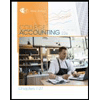
Income Statement:
It is a financial statement that shows the
Statement of
It is a financial statement that shows the amount of profit retained by the company for future unforeseen events.
The balance sheet concludes the assets invested in by the company as well as reports the liabilities and equity took up thus showing the economic or financial status of the company.
Closing entries:
These entries are made for those items whose balance needs to be zero for the next accounting period otherwise data from two accounting periods will get mixed and we only want to see the data of one accounting period in it.
Return on asset:
It tells us how much the company is earning from the total amount of assets it has. It is determined by dividing net income from total average assets into percentage terms.
Debt ratio:
It shows how much of the company’s assets are bought using debt capital. The higher the debt ratio higher the financial risk, lower the debt ratio lower the financial risk. it comes after dividing debt capital by total assets.
Profit margin ratio:
It shows how much the company is earning for every dollar of its revenue. It comes after dividing net sales from revenue into percentage terms.
It shows whether the company will be able to pay its current liabilities out of its current asset or not. It comes after dividing current liabilities by current assets.
1.
To prepare: Income statement, statement of retained earnings, and classified balance sheet.
2.
To prepare:
3.
a.
Return on assets ratio.
b.
Debt ratio.
c.
Profit margin ratio.
d.
Current ratio.
Want to see the full answer?
Check out a sample textbook solution
Chapter 3 Solutions
FIN + MANAG ACCT 180 DAY CUST CONN ACC
- I need help with this solution and general accounting questionarrow_forwardCozy Retreats currently sells 420 Standard hot tubs, 580 Luxury hot tubs, and 190 Premium model hot tubs each year. The firm is considering adding a Comfort model hot tub and expects that, if it does, it can sell 340 of them. However, if the new hot tub is added, standard sales are expected to decline to 290 units while Luxury sales are expected to decline to 310. The sales of the Premium model will not be affected. Standard hot tubs sell for an average of $8,900 each. Luxury hot tubs are priced at $14,500 and the Premium model sells for $22,000 each. The new Comfort model will sell for $12,300. What is the value of erosion?arrow_forwardSalma Production uses direct labor cost as the allocation base for applying MOH to WIP. The budgeted direct labor cost for the year was $850,000. The budgeted manufacturing overhead was $722,500. The actual direct labor cost for the year was $910,000. The actual manufacturing overhead was $745,000. A. What was Salma's predetermined manufacturing overhead rate per direct labor dollars? B. How much MOH was applied to WIP during the year?arrow_forward
- Hello tutor solve this question and accountingarrow_forwardThe total factory overhead for Leicester Manufacturing is budgeted for the year at $756,000. Leicester manufactures two product lines: standard lamps and premium lamps. These products each require 4 direct labor hours to manufacture. Each product is budgeted for 8,000 units of production for the year. Determine the factory overhead allocated per unit for premium lamps using the single plantwide factory overhead rate.arrow_forwardI need help with this solution and accounting questionarrow_forward
- https://investor.exxonmobil.com/sec-filings/annual-reports/content/0000034088-25-000010/0000034088-25-000010.pdf Use link to help me answer my question please in picturearrow_forwardHello tutor solve this question and accountingarrow_forwardCan you solve this general accounting question with accurate accounting calculations?arrow_forward
- Please provide the solution to this general accounting question with accurate financial calculations.arrow_forwardI need help with this general accounting problem using proper accounting guidelines.arrow_forwardStarbucks Corporation wants to make a profit of $32,000. It has variable costs of $65 per unit and fixed costs of $18,000. How much must it charge per unit if 5,000 units are sold?arrow_forward
- Principles of Accounting Volume 1AccountingISBN:9781947172685Author:OpenStaxPublisher:OpenStax College
 College Accounting, Chapters 1-27 (New in Account...AccountingISBN:9781305666160Author:James A. Heintz, Robert W. ParryPublisher:Cengage Learning
College Accounting, Chapters 1-27 (New in Account...AccountingISBN:9781305666160Author:James A. Heintz, Robert W. ParryPublisher:Cengage Learning - Century 21 Accounting Multicolumn JournalAccountingISBN:9781337679503Author:GilbertsonPublisher:Cengage
 College Accounting (Book Only): A Career ApproachAccountingISBN:9781337280570Author:Scott, Cathy J.Publisher:South-Western College Pub
College Accounting (Book Only): A Career ApproachAccountingISBN:9781337280570Author:Scott, Cathy J.Publisher:South-Western College Pub Principles of Cost AccountingAccountingISBN:9781305087408Author:Edward J. Vanderbeck, Maria R. MitchellPublisher:Cengage Learning
Principles of Cost AccountingAccountingISBN:9781305087408Author:Edward J. Vanderbeck, Maria R. MitchellPublisher:Cengage Learning





